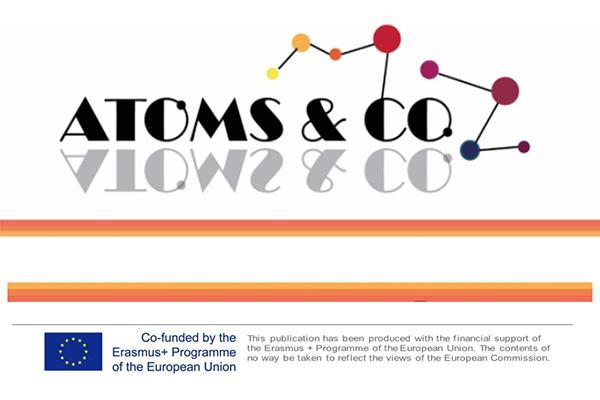Prima Newsletter di ATOMS&CO
Diamo il benvenuto alla prima newsletter di ATOMS&CO, che sarà pubblicata ogni 4 mesi in lingua inglese per informare riguardo allo stato di avanzamento del progetto. Per ricevere la newsletter è sufficiente compilare questo FORM con i propri contatti.
ECCO LA VERSIONE TRADOTTA IN ITALIANO: Newsletter IT Atoms&Co
This newsletter will be published every fourth months and is intended to inform you on the progress of the project.
ATOMS & CO is complementary to the previous project “Leonardo Transfert Innovation “Action To Make System – ATOMS” that was set up between 2013-2015. Indeed, the latter pointed out that family factors were not sufficiently taken into account in accompanying dropouts. The aim of the ATOMS & Co project is therefore to improve the involvement of families in the school life of their children and to pursue the objective of creating a school hook-up system.
The aims of the project:
Develop and implement a system of school hooking centred on the inclusion of families.
- Define the needs of families and ground actors through the development of an inventory,
- Promote synergies between families, schools and welfare actors (youth aid, public services, etc.) in order to reduce the risk of dropping out of school and / or improve their success,
- Improve dialogue with families by making the meaning and challenges of schooling and the functioning of the school system more understandable,
- Develop a transnational scheme corresponding to identified needs, test and adapt it,
- To equip the actors on the ground in order to take into account the family factors in the support of dropout students.
Target groups :
The ATOMS & Co project will target two specific groups:
- Families with particular attention to those at risk of dropping out of pupils aged 6 to 18 years.
- Schools and actors of social assistance (Youth aid, public services, etc.)
Intellectual Outputs (I.O.):
I.O.1
Creation of a working group to study: the representations, experiences of families (with particular attention to families at risk of dropping out) with respect to the system and the school and vice versa. Then, create a questionnaire to carry out an inventory, to define the needs of ground actors and families, and the factors favourable to school hooking and thus create a framework of good practice.
I.O.2
After the identification of good practices, develop a system of school hooking centred on the inclusion of families by constructing a device centred on the mobilization of families and by developing tools enabling the actors in the field to accompany and support families.
I.O.3
Device learning phase:
It will be a matter of experimenting and applying the process of collaboration between the actors on the ground and of equipping the actors involved in the project by exchanging good practices and training between the different partner countries (thanks to the I.O.2 ). Prepare the device in the next phase: the test phase (I.O.4).
I.O.4
Test and Adapt the device:
Prior to the test phase, a common grid that will serve as the basis for the testing will be carried out. Once the grid (made up of indicators of evaluation of results) is constituted, each of the partners will carry out the testing.
Main forecasted results of ATOMS & Co:
- Identify and compare existing field practices for the involvement of families,
- Involve families in the activities of the project and in particular in the design and validation of the system aimed at strengthening the partnership between families – schools – social welfare actors (Youth aid services, public services, etc.),
- Design and development of a system (training, methodological guide, teaching resources and tools),
- Train ground actors to the device,
- Organisation of national and transnational events

Info sull'autore